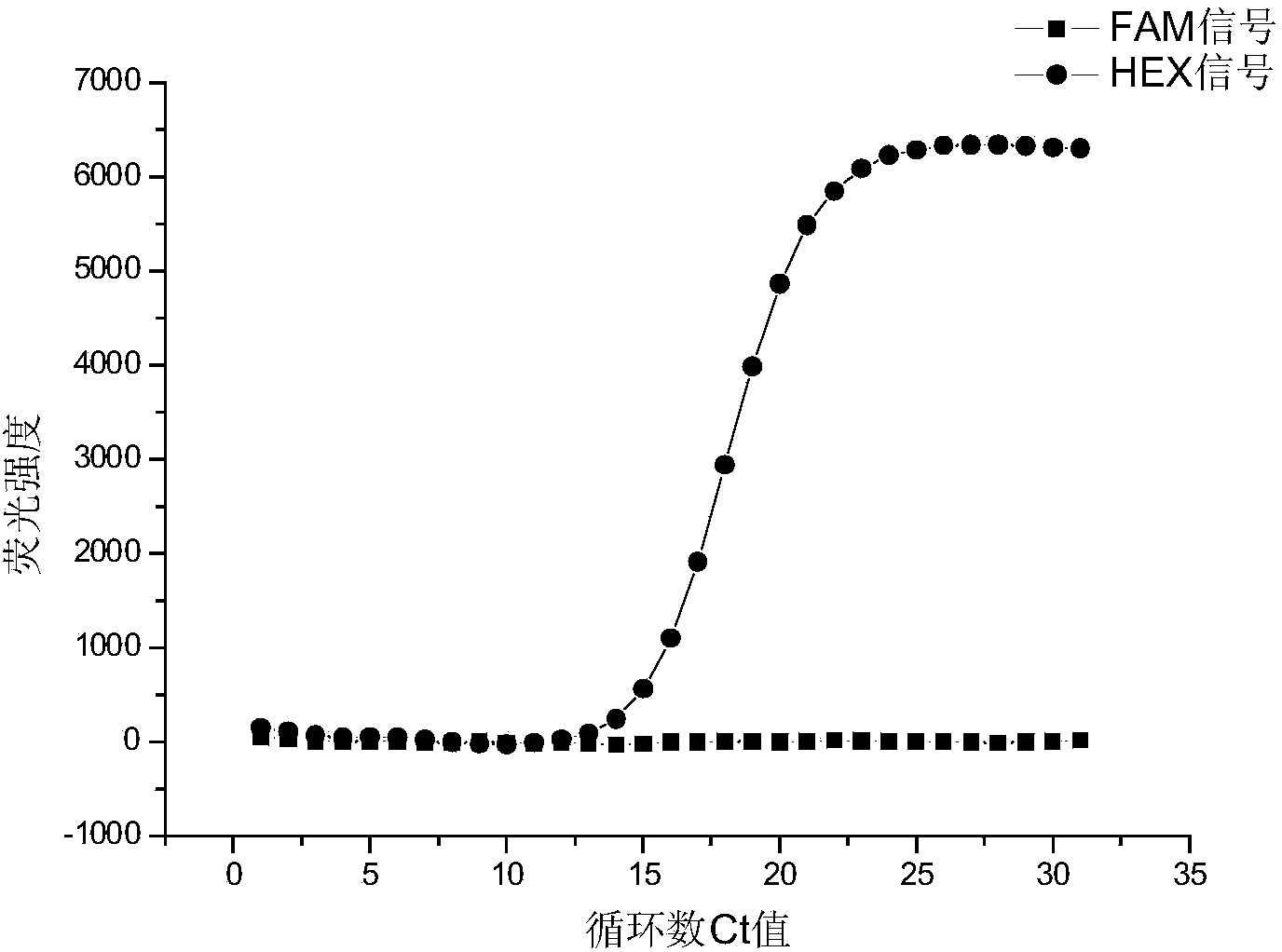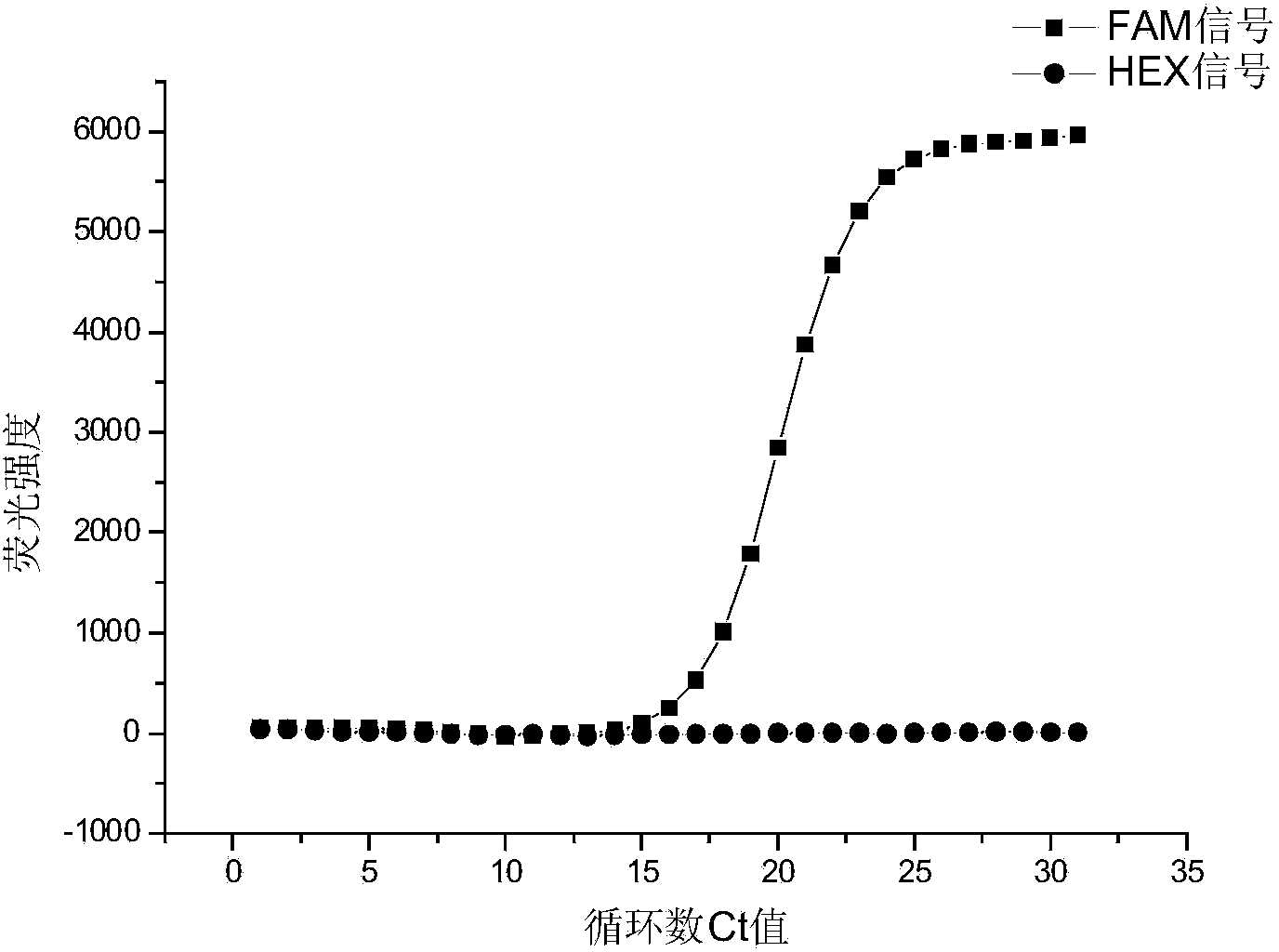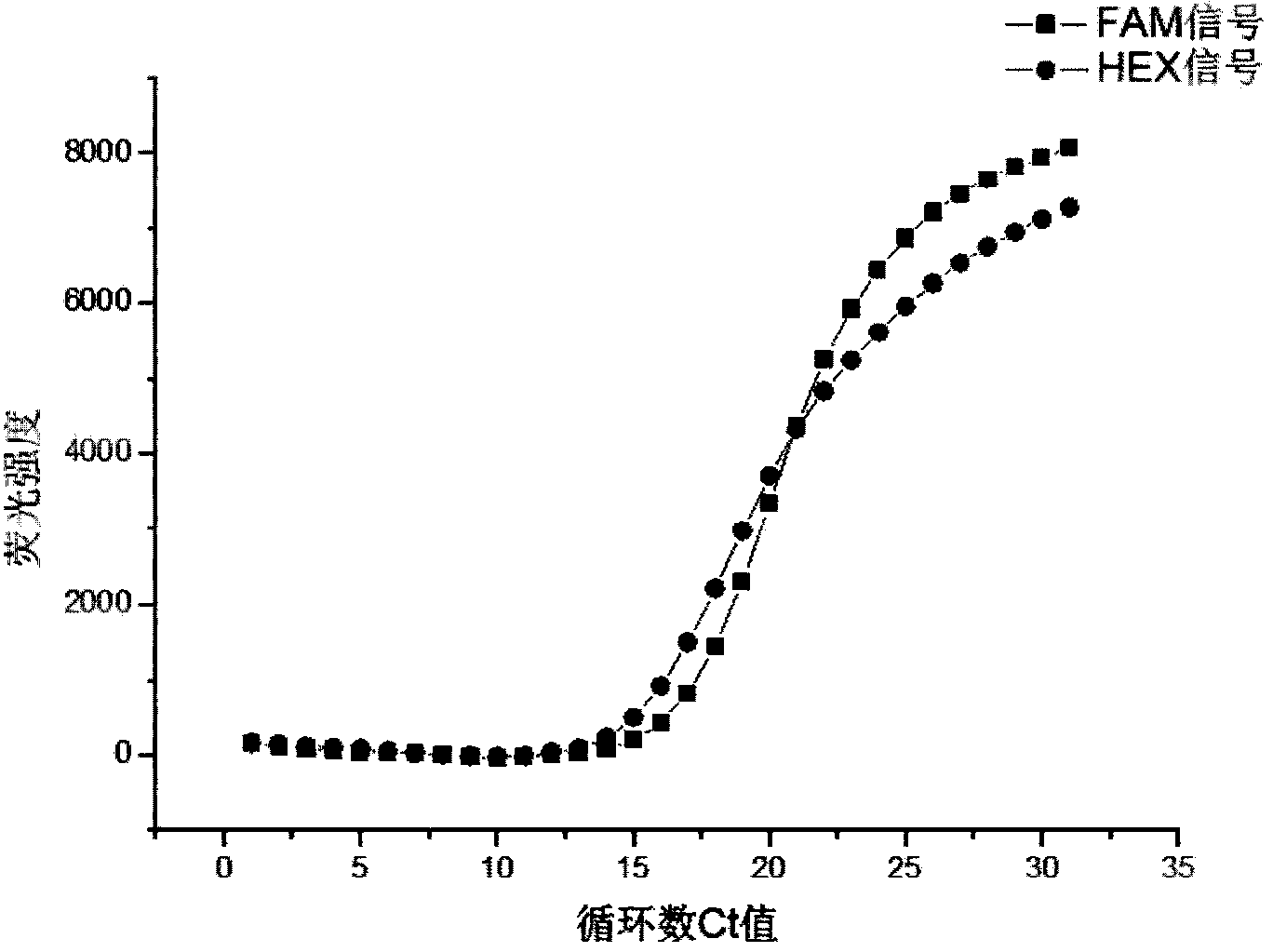Primer and probe for screening human deafness multi-gene mutation and application method thereof
A human and probe technology, applied in biochemical equipment and methods, microbial determination/inspection, DNA/RNA fragments, etc., can solve problems such as poor repeatability and cross-contamination
- Summary
- Abstract
- Description
- Claims
- Application Information
AI Technical Summary
Problems solved by technology
Method used
Image
Examples
Embodiment 1
[0175] In this embodiment, the detection of the GJB2 gene is taken as an example to illustrate the method of single-tube fluorescence PCR detection of the sample to be tested.
[0176] The samples used in the experiment were a total of 1,200 samples of deaf-mute students and their family members, including 400 deaf-mute students and 800 family members.
[0177] Utilize above-mentioned fluorescent PCR method to identify the method for GJB2 gene mutation in 1200 people as follows:
[0178] (1) DNA extraction of samples:
[0179] A 400 μL whole blood sample was drawn from each person, and DNA was extracted using RBC MagCore Genomic DNA Whole Blood Kit kit (Cat.No.: MGB400-04) according to the kit's operating instructions. After the quality of the extracted DNA was detected by an ultraviolet spectrophotometer, the extracted DNA was adjusted to 10 ng / μL with Tris-HCl solution (10 mmol / L, pH 8.0) as a template for PCR amplification;
[0180] (2) Fluorescent PCR amplification:
[...
Embodiment 2
[0203] In this example, the detection of the GJB3 gene is taken as an example to illustrate the method of single-tube fluorescent PCR detection of the sample to be tested.
[0204] The samples used in the experiment were a total of 1,200 samples of deaf-mute students and their family members, including 400 deaf-mute students and 800 family members.
[0205] Utilize above-mentioned fluorescent PCR method to identify the method for GJB3 gene mutation in 1200 people as follows:
[0206] (1) DNA extraction of samples:
[0207] A 400 μL whole blood sample was drawn from each person, and DNA was extracted using RBC MagCore Genomic DNA Whole Blood Kit kit (Cat.No.: MGB400-04) according to the kit's operating instructions. After the quality of the extracted DNA was detected by an ultraviolet spectrophotometer, the extracted DNA was adjusted to 10 ng / μL with Tris-HCl solution (10 mmol / L, pH 8.0) as a template for PCR amplification;
[0208] (2) Fluorescent PCR amplification:
[0209...
Embodiment 3
[0228] In this embodiment, the detection of the SLC26A4 gene is taken as an example to illustrate the method of single-tube fluorescence PCR detection of the sample to be tested.
[0229] The samples used in the experiment were a total of 1,200 samples of deaf-mute students and their family members, including 400 deaf-mute students and 800 family members.
[0230] The method for identifying the SLC26A4 gene mutation in 1200 people using the above fluorescent PCR method is as follows:
[0231] (1) DNA extraction of samples:
[0232] A 400 μL whole blood sample was drawn from each person, and DNA was extracted using RBC MagCore Genomic DNA Whole Blood Kit kit (Cat.No.: MGB400-04) according to the kit's operating instructions. After detecting the amount of extracted DNA with a UV spectrophotometer, adjust the extracted DNA to 10 ng / μL with Tris-HCl solution (10 mmol / L, pH 8.0) as a template for PCR amplification;
[0233] (2) Fluorescent PCR amplification:
[0234] The PCR sys...
PUM
 Login to View More
Login to View More Abstract
Description
Claims
Application Information
 Login to View More
Login to View More - R&D
- Intellectual Property
- Life Sciences
- Materials
- Tech Scout
- Unparalleled Data Quality
- Higher Quality Content
- 60% Fewer Hallucinations
Browse by: Latest US Patents, China's latest patents, Technical Efficacy Thesaurus, Application Domain, Technology Topic, Popular Technical Reports.
© 2025 PatSnap. All rights reserved.Legal|Privacy policy|Modern Slavery Act Transparency Statement|Sitemap|About US| Contact US: help@patsnap.com



